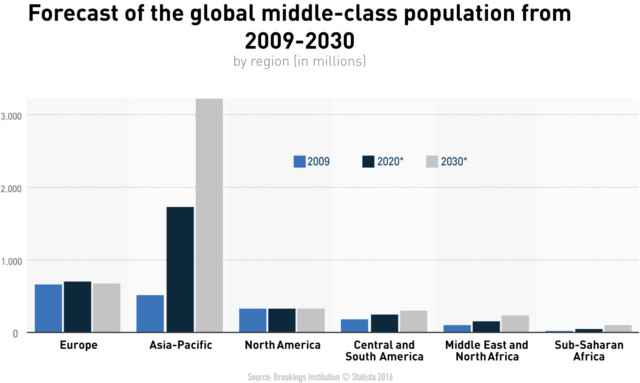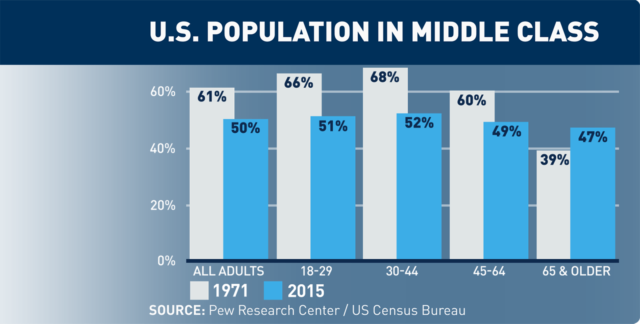A growing middle class in China is driving consumption domestically and globally.
Behind the willingness to buy, is the pursuit for a high quality of life. But while enjoying the prosperity, the new middle class families also understand that there’s still plenty to keep the mind focused.
CCTV’s Mao Dan reports from Beijing.

According to a Swiss Bank report, China’s middle class population has tripled to 109 million, overtaking the United States as the world’s largest.
But many said the figure is an overestimation.
In cities like Beijing, some high-income people believe they need to work harder and save more before they can call themselves middle class.
While people’s wealth is growing in the world’s second largest economy, what matters to them most, and every family, is not how much they earn, but whether their wealth can provide a sense of security.
US cities try to reclaim middle class hopes, dreams
While the share of people in China’s middle class is rising, the opposite is happening in the United States.
In 1971, about six in 10 adults in the U.S. were in the middle class.
Last year, however, just half of adults were. Every age group took a hit from the recession, except for those older than the age of 65. The steepest drop occurred among people aged 30 to 44.
But there are places in the United States where people have managed to achieve middle income or even upper income status.
The city of Grand Junction, Colorado, is one such place.
CCTV America’s Hendrik Sybrandy has Insight from Colorado.

West Star Aviation, based in Grand Junction, Colorado, is a company that maintains and refurbishes jets from all over the world. The company has been growing fast and Dave Krogman, company’s general manager, credits his 425 employees for the company’s good fortune. He plans to hire 50 more people in the next 18 months.
The path of West Star Aviation’s boom mirrors Grand Junction’s methodical approach to building its economy.
Grand Junction is a success story – or it was between 1999 and 2014 when median household income jumped 12 percent here, the third highest increase for any U.S. metropolitan area.
Kristi Pollard of the Grand Junction Economic Partnership said the oil and gas industry fueled a lot of the growth in the area. She adds the city’s quality of life, which relies heavily on outdoor activities, a diversified economy and an 8-year tax holiday for businesses have all acted as magnets in Western Colorado.
Health care has also been a strong economic engine. St. Mary’s Medical Center has grown right along with the increase in retirees in this region. It has 100 open jobs posted at any given time.
Grand Junction has seen a net increase of 11 percent of adults move into the upper-income category, welcome news in a city that was economically distressed in the past.
And the challenge now is to keep tinkering and fixing, to keep bringing outside customers into the area, the way West Star does every day.

 CGTN America
CGTN America

